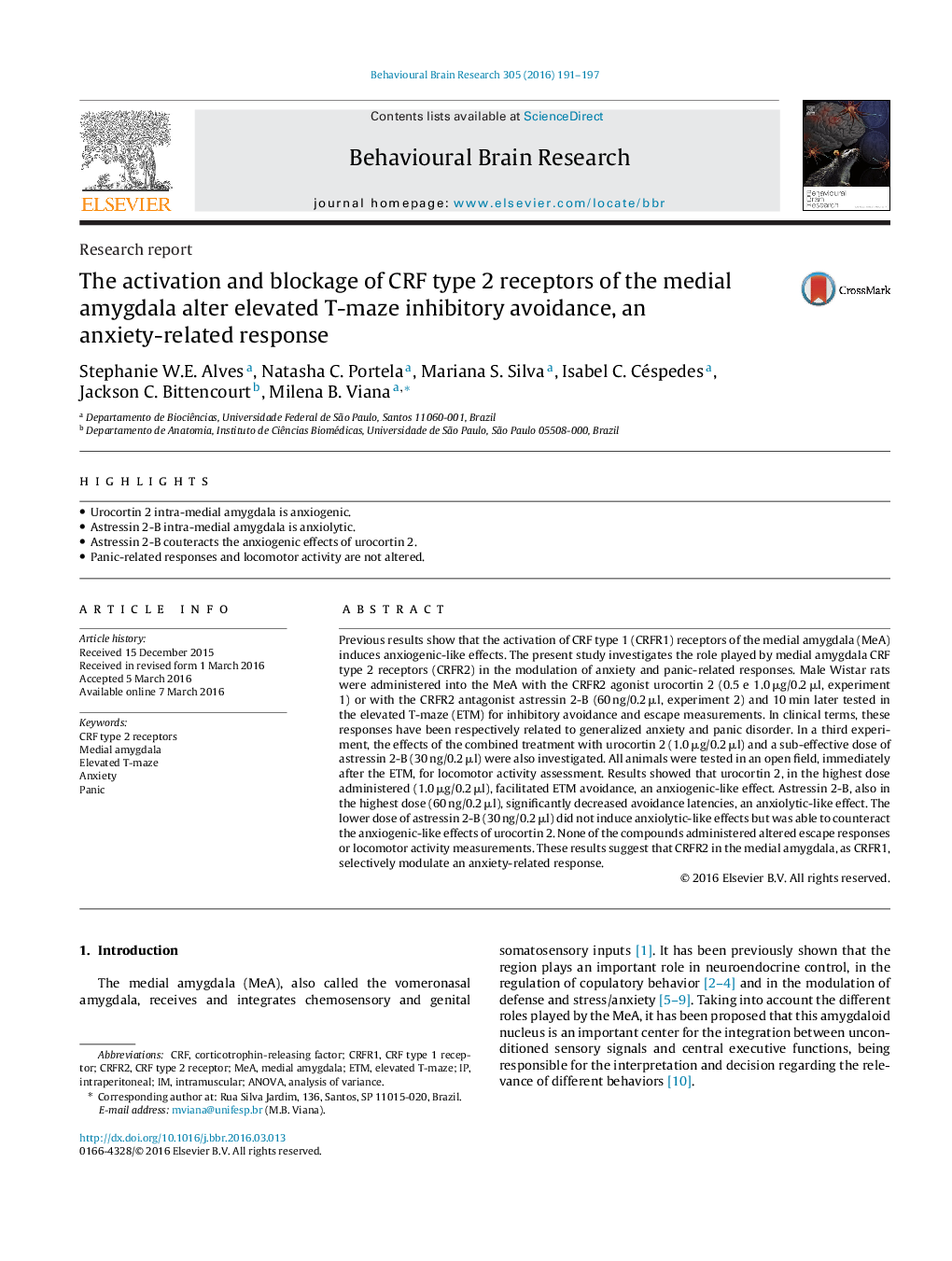| Article ID | Journal | Published Year | Pages | File Type |
|---|---|---|---|---|
| 4312160 | Behavioural Brain Research | 2016 | 7 Pages |
•Urocortin 2 intra-medial amygdala is anxiogenic.•Astressin 2-B intra-medial amygdala is anxiolytic.•Astressin 2-B couteracts the anxiogenic effects of urocortin 2.•Panic-related responses and locomotor activity are not altered.
Previous results show that the activation of CRF type 1 (CRFR1) receptors of the medial amygdala (MeA) induces anxiogenic-like effects. The present study investigates the role played by medial amygdala CRF type 2 receptors (CRFR2) in the modulation of anxiety and panic-related responses. Male Wistar rats were administered into the MeA with the CRFR2 agonist urocortin 2 (0.5 e 1.0 μg/0.2 μl, experiment 1) or with the CRFR2 antagonist astressin 2-B (60 ng/0.2 μl, experiment 2) and 10 min later tested in the elevated T-maze (ETM) for inhibitory avoidance and escape measurements. In clinical terms, these responses have been respectively related to generalized anxiety and panic disorder. In a third experiment, the effects of the combined treatment with urocortin 2 (1.0 μg/0.2 μl) and a sub-effective dose of astressin 2-B (30 ng/0.2 μl) were also investigated. All animals were tested in an open field, immediately after the ETM, for locomotor activity assessment. Results showed that urocortin 2, in the highest dose administered (1.0 μg/0.2 μl), facilitated ETM avoidance, an anxiogenic-like effect. Astressin 2-B, also in the highest dose (60 ng/0.2 μl), significantly decreased avoidance latencies, an anxiolytic-like effect. The lower dose of astressin 2-B (30 ng/0.2 μl) did not induce anxiolytic-like effects but was able to counteract the anxiogenic-like effects of urocortin 2. None of the compounds administered altered escape responses or locomotor activity measurements. These results suggest that CRFR2 in the medial amygdala, as CRFR1, selectively modulate an anxiety-related response.
